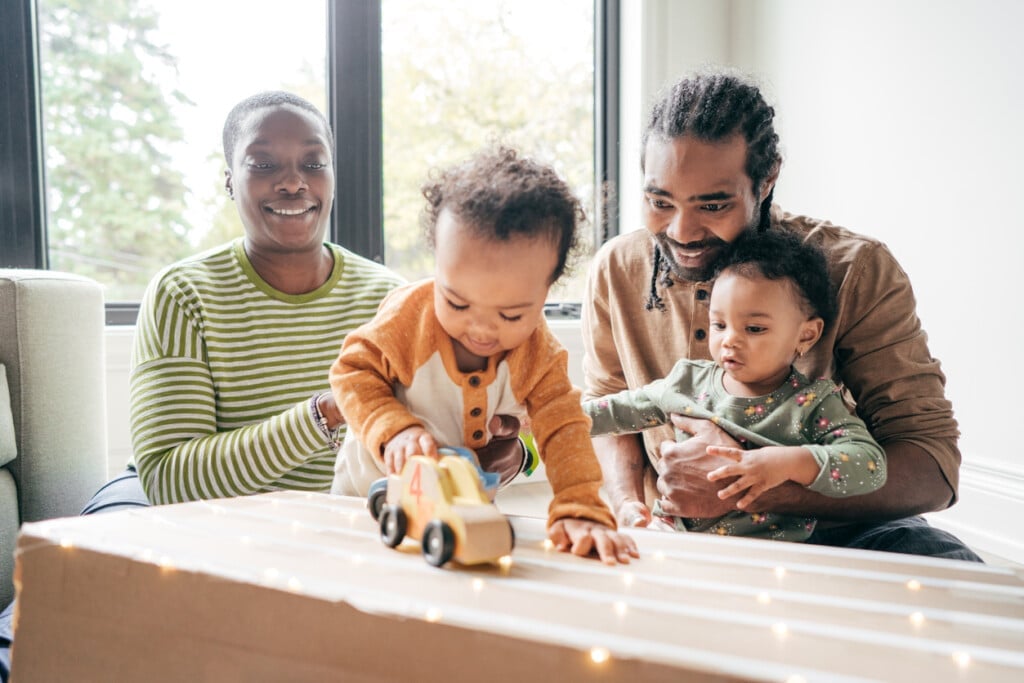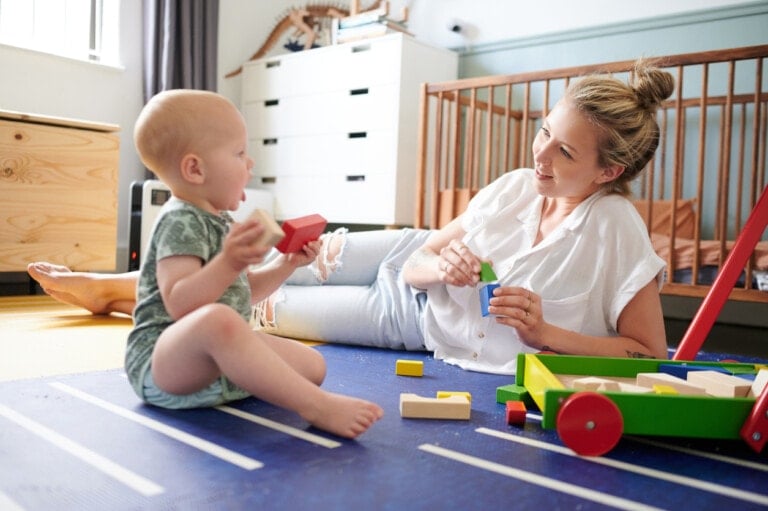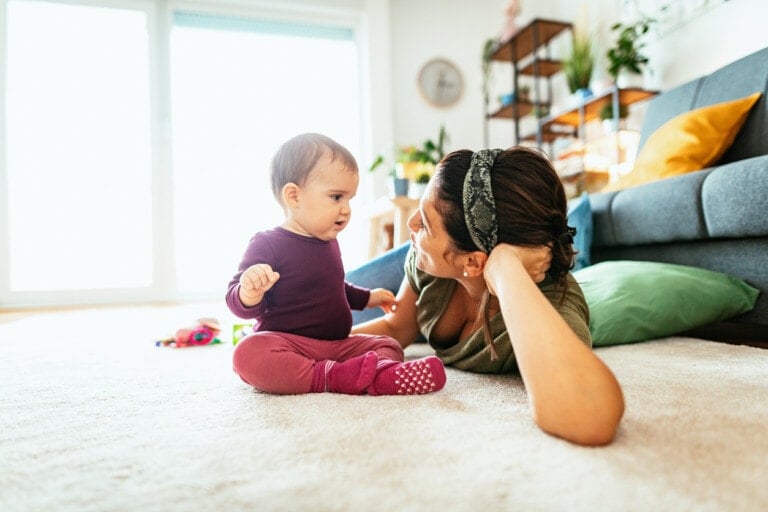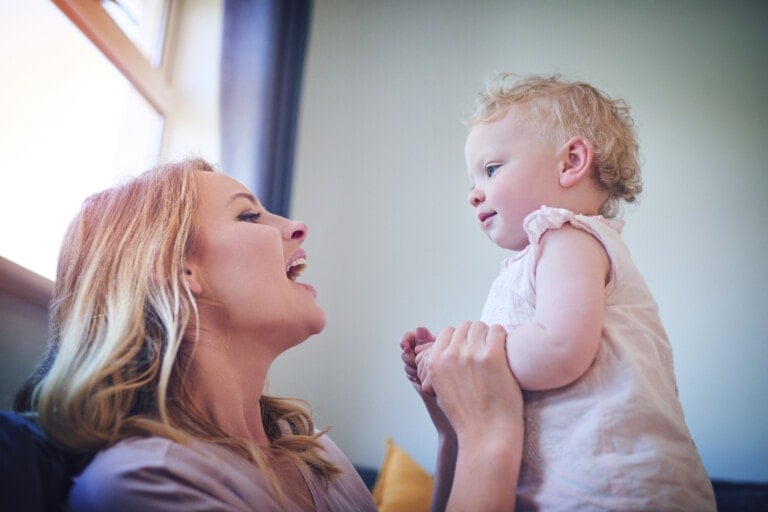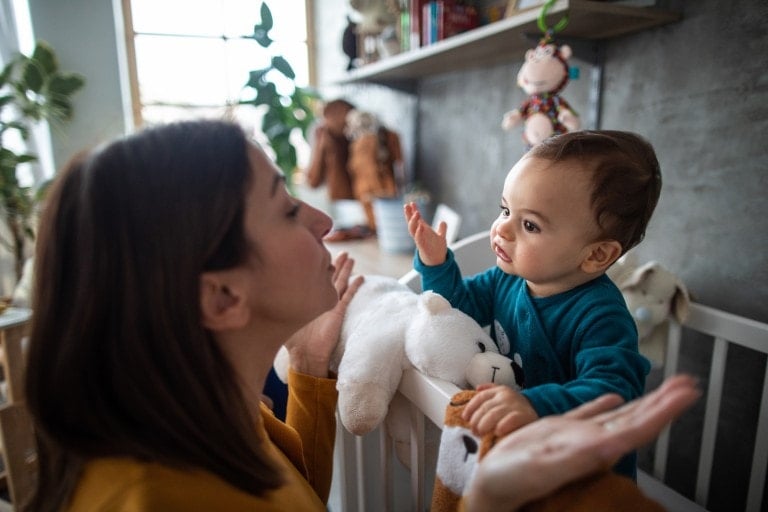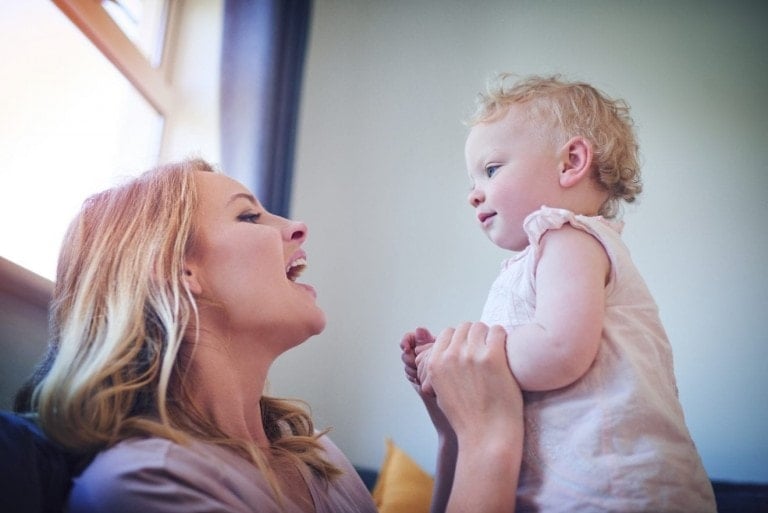Toddlers crave attention and connection from us. Getting down on the floor and engaging in structured, functional play is one of the best ways to bond with them while promoting their language skills. The best language development toys encourage open-ended play through pretend and imagination. We want to give our kids the most opportunities to use their amazing little brains while exploring and interacting with their toys.1,2
According to researchers, open-ended play allows children to make choices, express their creativity, and support their language skills. We’ve made a list of top toys for open-ended play and toddler language development.3
10 Language Development Toys for Toddlers
Here are 10 excellent ideas for language development toys for your toddler.
1. Farm and Barn Toys
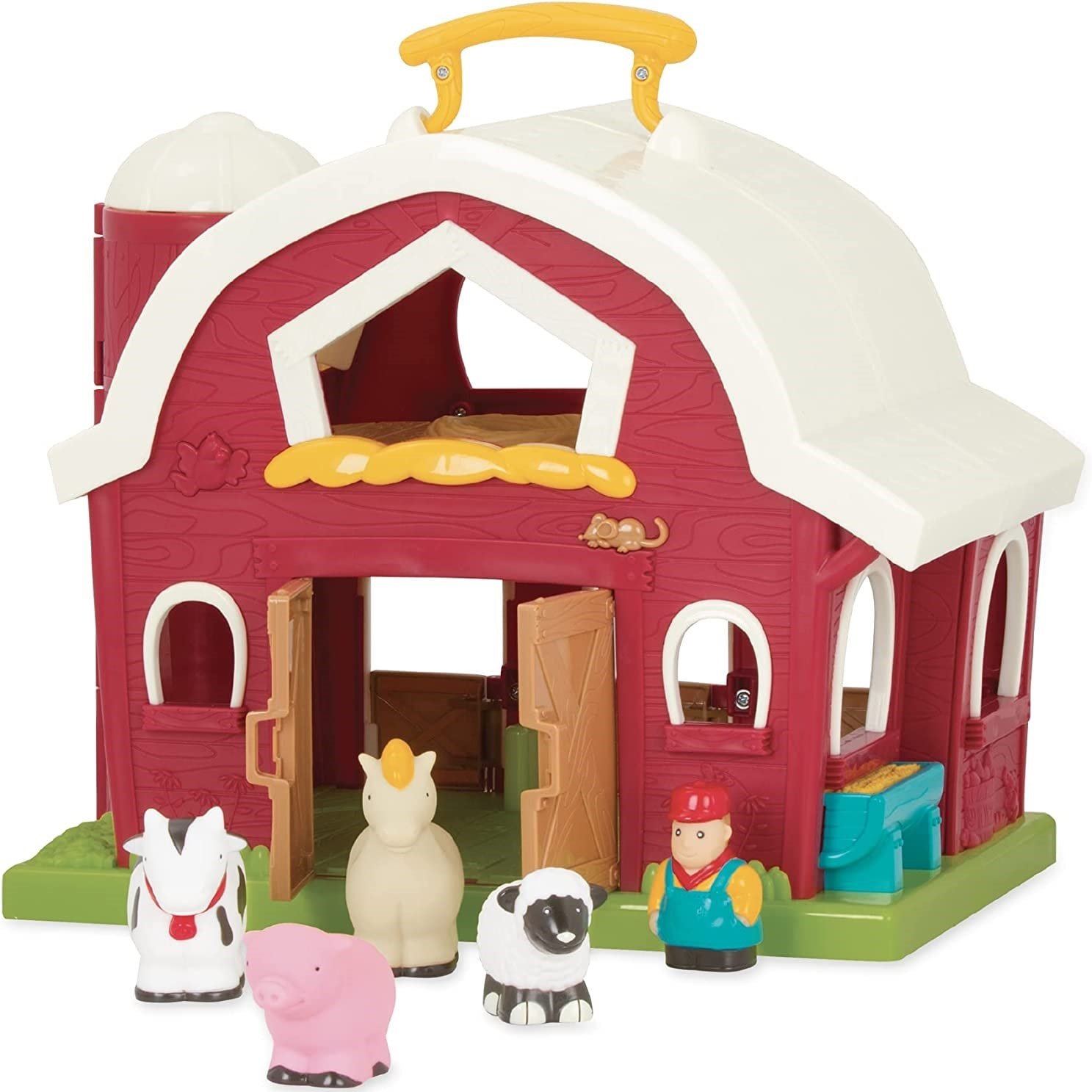
Farm animals and a barn are a fantastic way to target early language skills, especially for young babies and toddlers. Label animals, parts of the barn, food items, colors, and animal body parts. Practice making animal sounds with repeated sounds, such as “moo moo” and “baa baa.” Act out scenes with the animals and emphasize the action words: eat, drink, run, walk, play, sleep, and more. Use short, functional phrases like “Hi cow,” “pig is eating,” and “Oh no, fall down!” Practice following directions in play and model the location words or use gestures to reinforce. For example, you put the chicken in the nest, then instruct your toddler to do the same: “Now you do it; put the chicken in.”
2. Dollhouse and Family
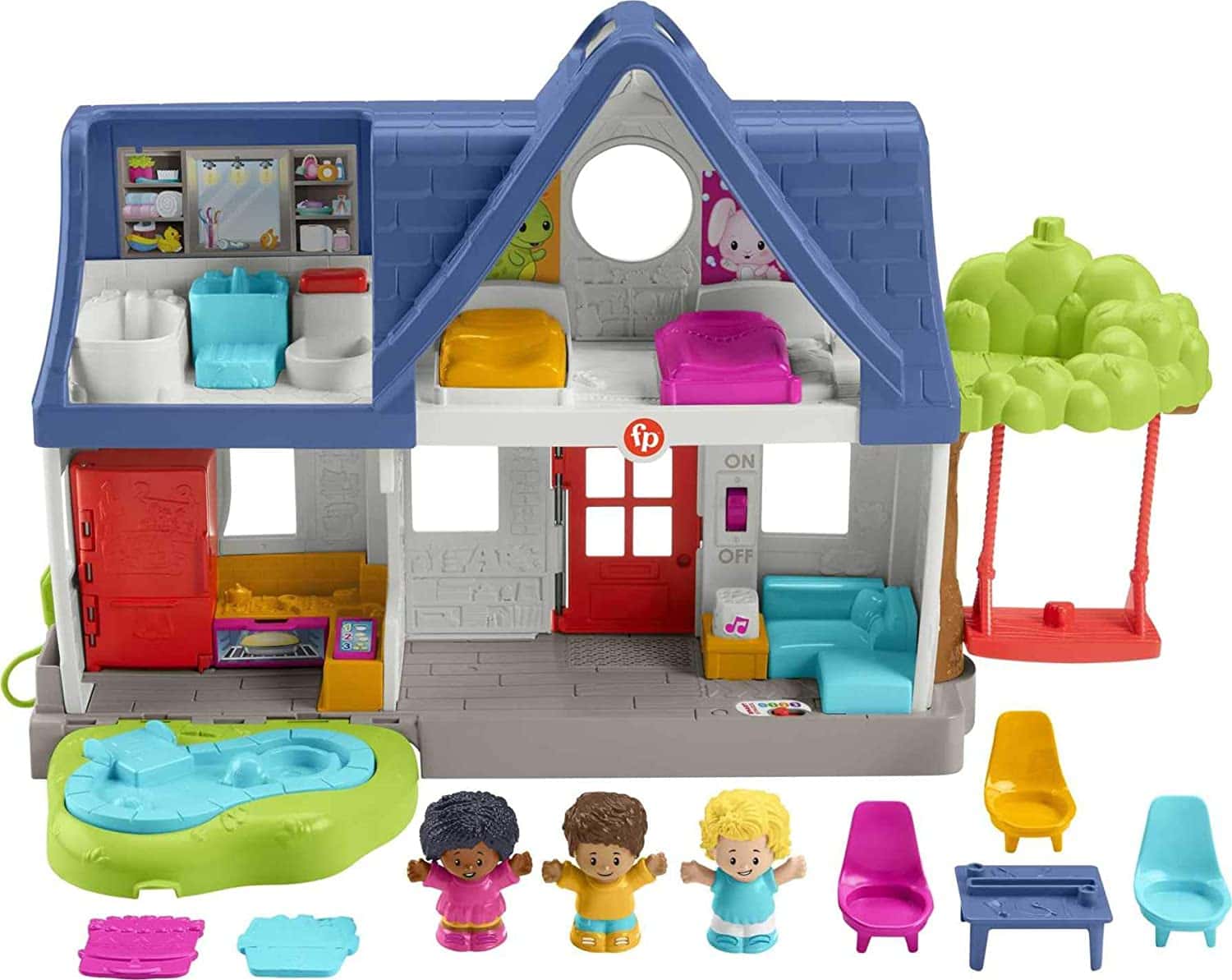
You can name all the family members, furniture, and rooms with a doll house and its accessories. Practice verbs while placing the dolls in pretend play scenes, such as eating in the kitchen, washing in the bathroom, and sleeping in the bedroom. Model short phrases for your toddler to attempt to imitate about the dolls and activities around the home; “mama sit” and “Hi dada.” Target following directions by incorporating location concepts such as “put mommy in the bathtub” and “take dada out.” Take turns using each doll and play items, model requesting, and even act out the doll scenes in real life. Dollhouses and their accessories are toys appropriate for kids of all ages, stages, and genders!
3. Racetrack
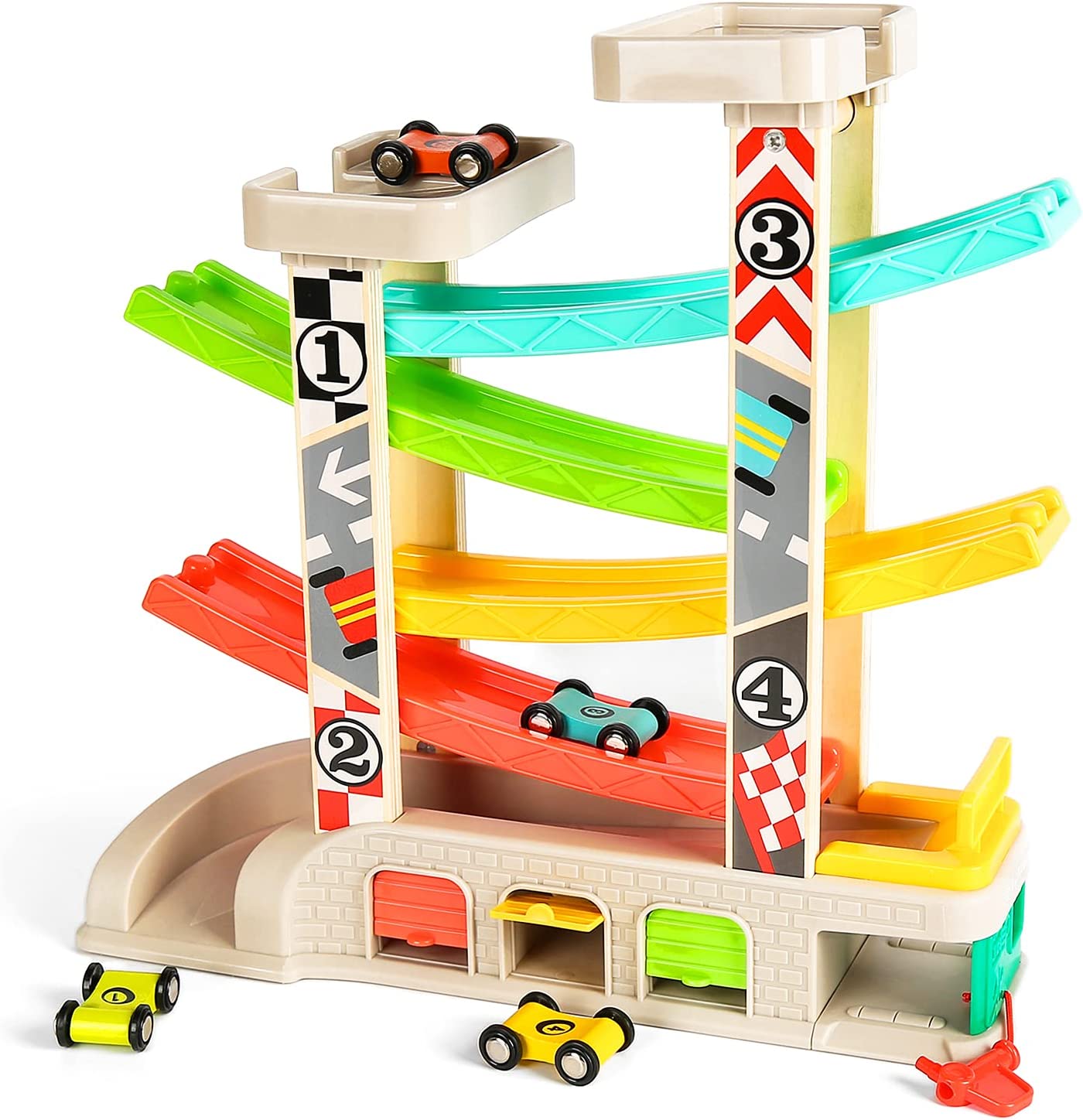
Encourage your child to describe the racetrack components, such as the curves, ramps, and loops. Describe the size and emphasize your words as you say, “Wow! So BIG!” Label the cars, accessories like stop lights or bridges, colors, and car parts like wheels or windows. Use action words like “go,” “stop,” and “fast” to create excitement and engage their imagination. Practice turn-taking and following directions as you play together. Use phrases like “Your turn,” “Ready, set, go!” and “Car goes down, down, down.” After modeling the words “ready, set, go” a few times, give your child a chance to finish the phrase for you. You start “ready, set….” and point or gesture for them to finish with “go!” and then release the car to create a cause-and-effect teaching opportunity with your little one.
4. Mr. Potato Head
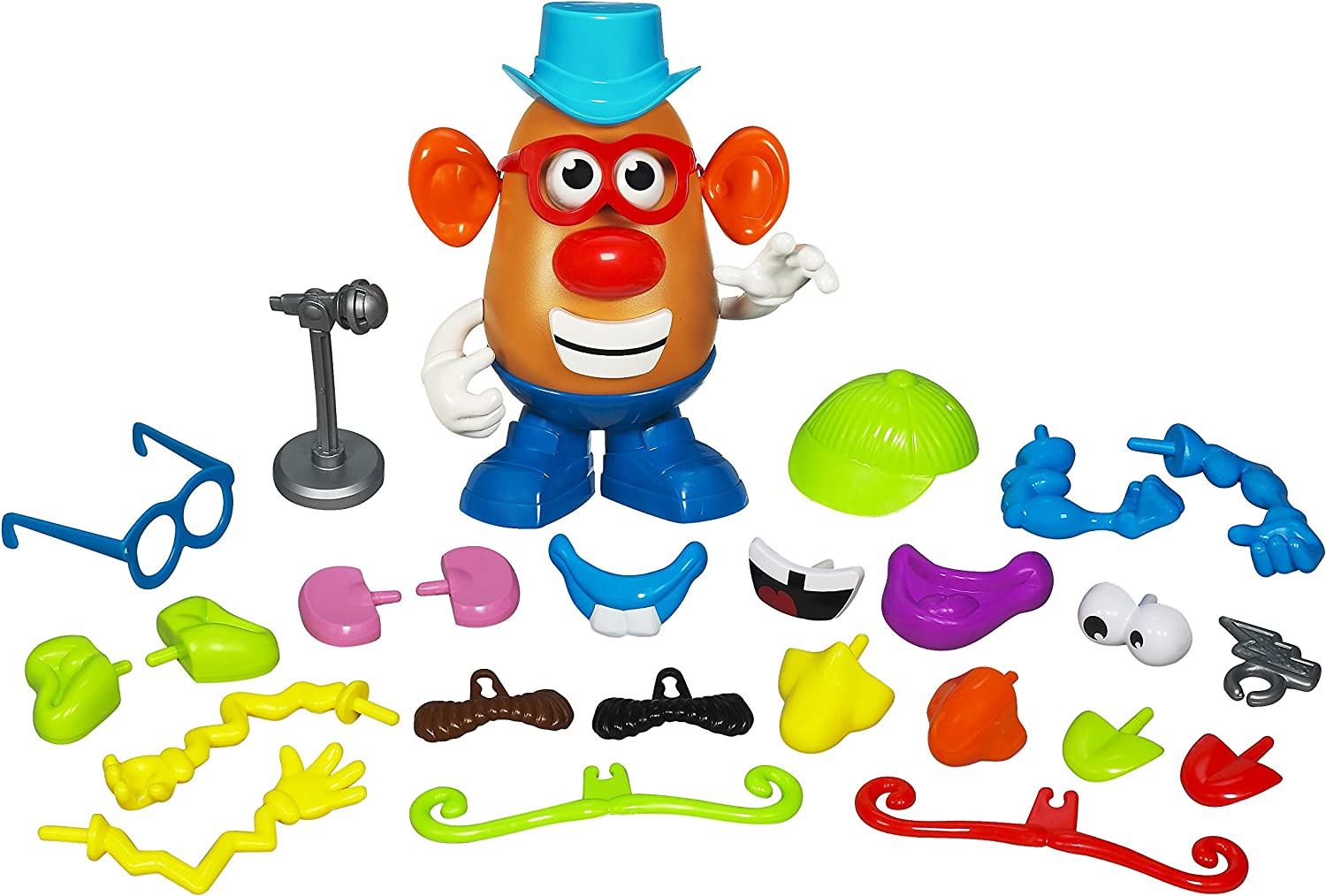
Encourage your child to name and describe the different parts of this language development toy, such as the eyes, nose, and mouth. Prompt them to request specific body parts by giving choices like “Should we do the eyes or the shoes next?” Model for your child how to ask without demanding. Use descriptive language as you play, saying things like, “Let’s put the big blue eyes on Mr. Potato Head” or “Can you find the round red nose?” Encourage imaginative play by creating stories or giving the toy a unique personality, which enhances storytelling skills.
5. Puzzles
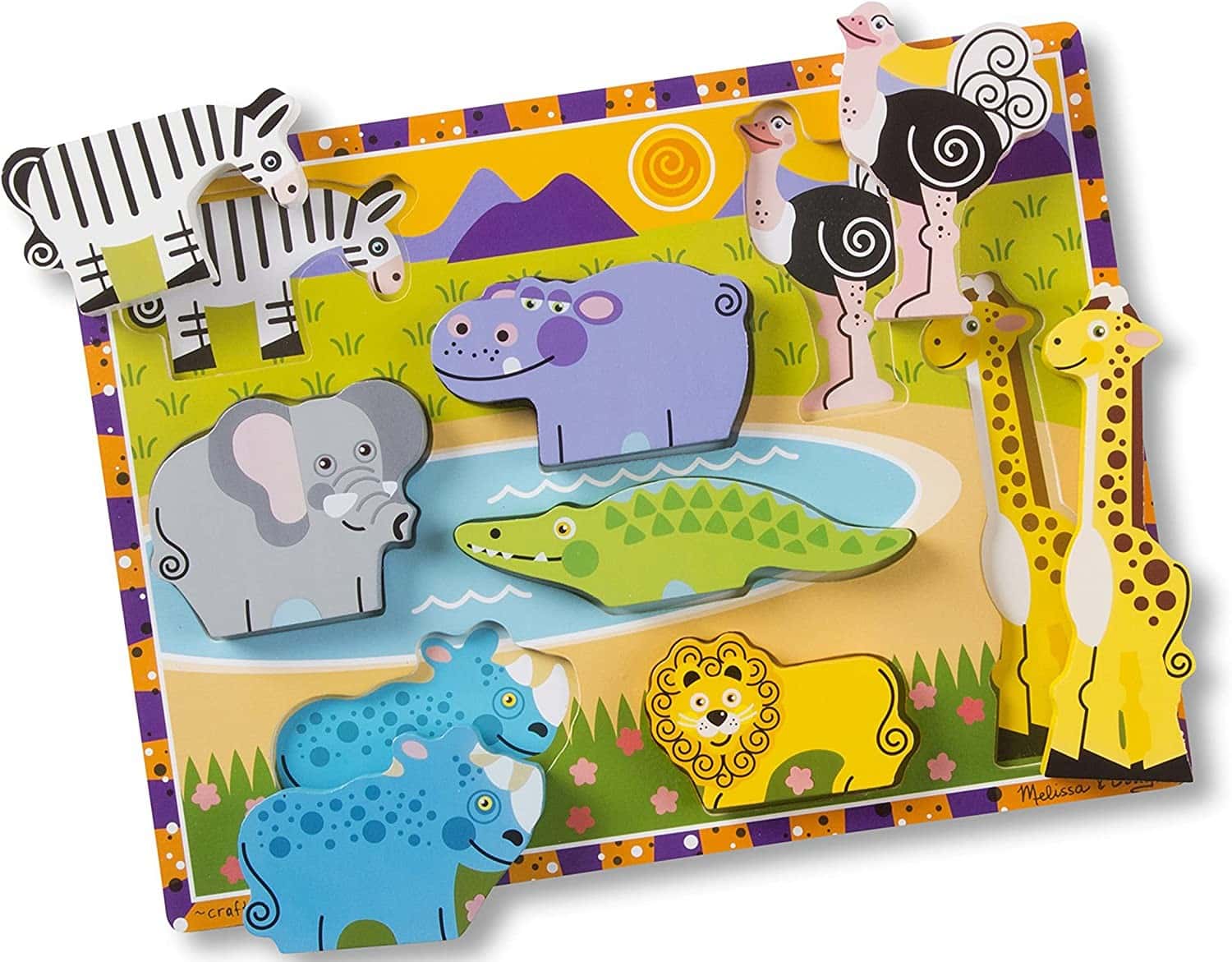
Puzzles have many themes and sometimes have interactive accessories like doors or latches. They can be a fun way to expose your little one to new vocabulary. Start by naming the puzzle pieces as they play and describe their shapes, colors, or patterns. Describe the scene the puzzle creates for your child, discussing the objects or animals depicted. Use the puzzle pieces as characters in pretend play as you narrate what they are doing. As your child grows, puzzles are an excellent way to target answering questions like “What says moo?” or “What animal is the biggest?”
6. Play Kitchen and Food
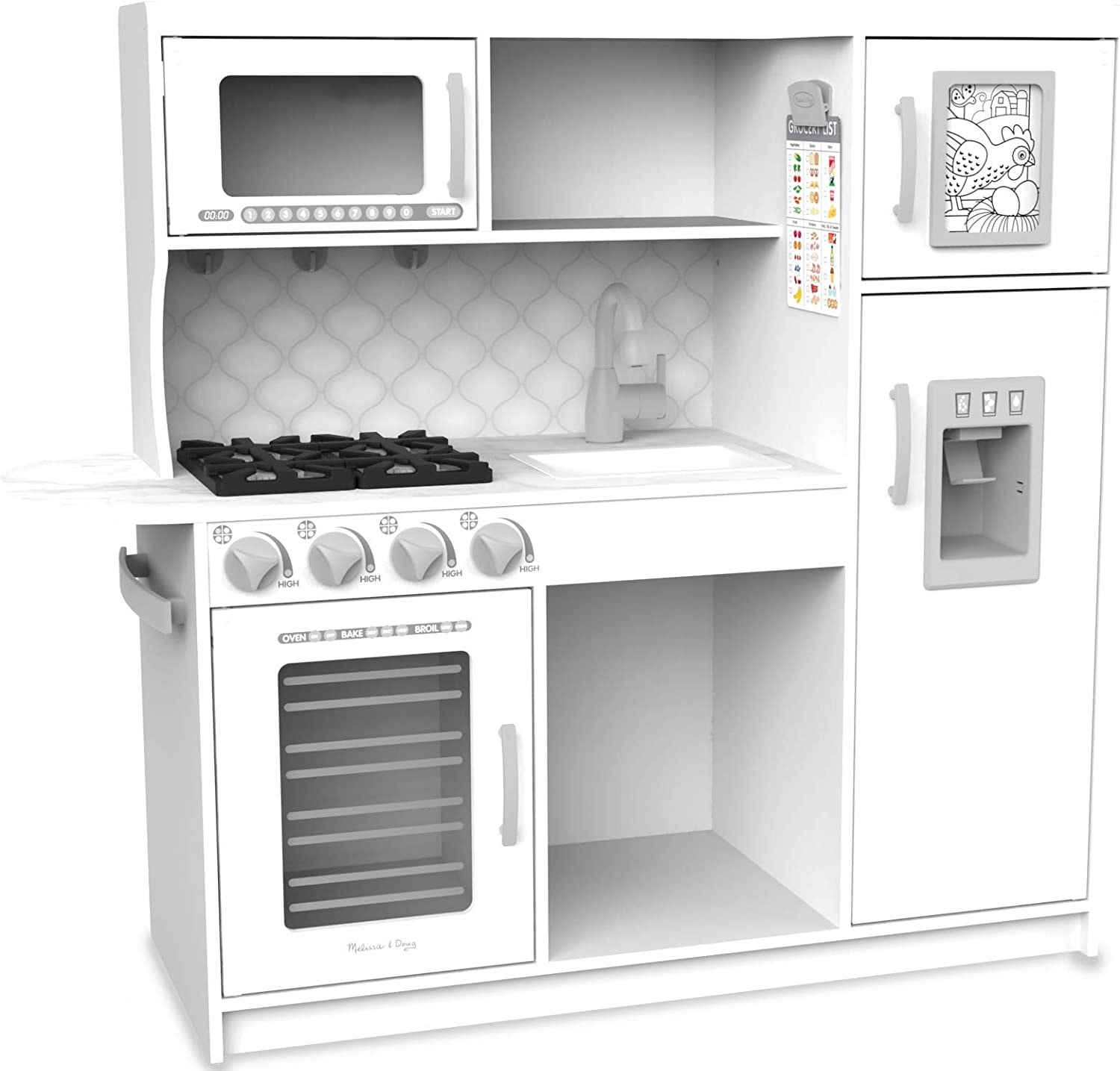
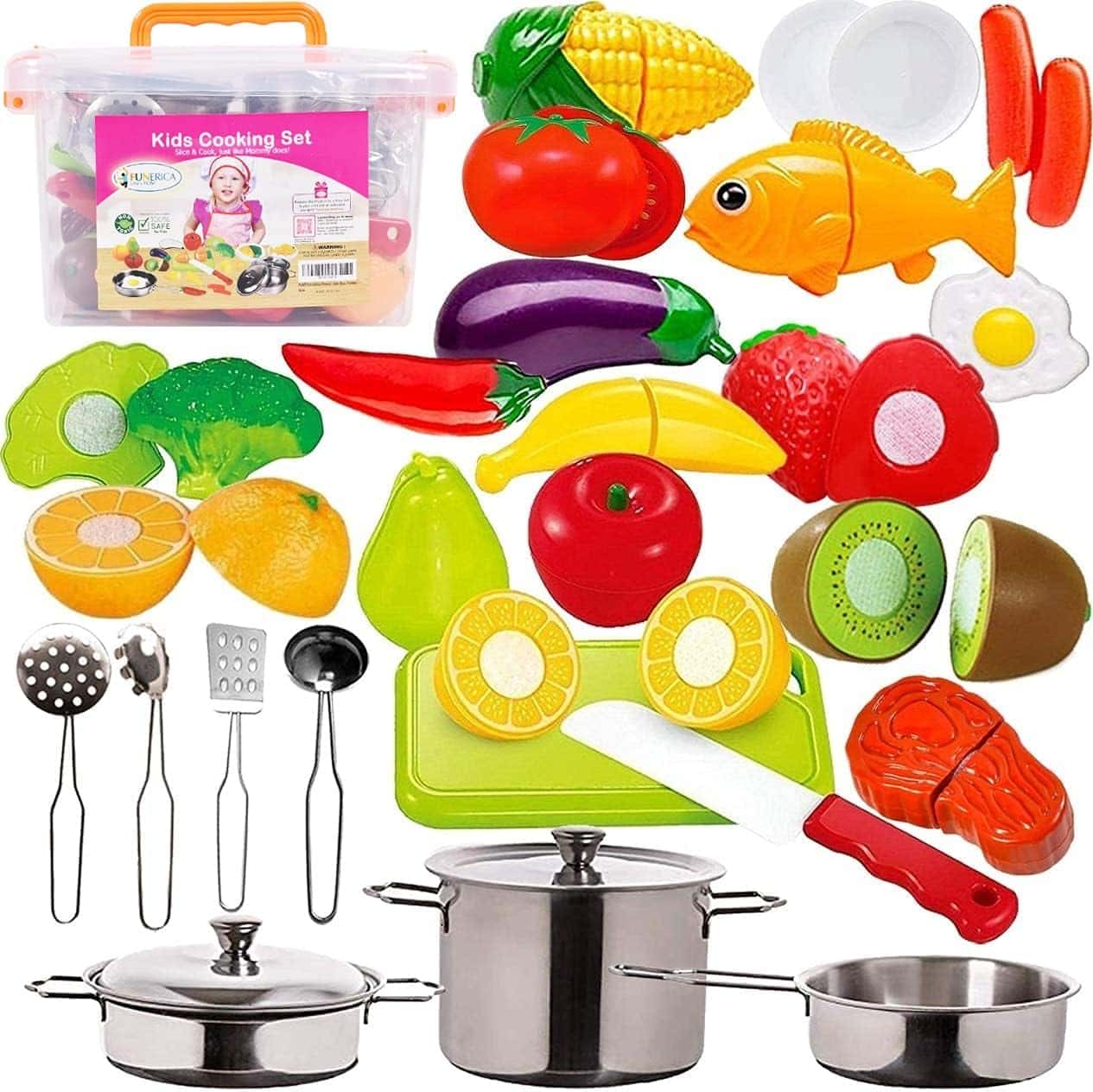
With a play kitchen, the opportunities for language learning are endless. Start by labeling food items and kitchen utensils. Target verbs as you pretend to make food, like mix, cook, pour, open, and eat. Engage in conversation while playing, discussing what you are “cooking” or “preparing.” Give your child opportunities to practice receptive language skills by “placing orders” like “Mommy is hungry, can you bring me the apple?” or “Dada wants more milk, please” while holding out your cup.
Prompt your child to give instructions or ask for specific items, fostering their ability to communicate and express themselves. Encourage role-playing and imaginative storytelling as your child ages, creating scenarios where your child can act as a chef or customer and using descriptive language to describe the pretend meals.
7. Baby Dolls
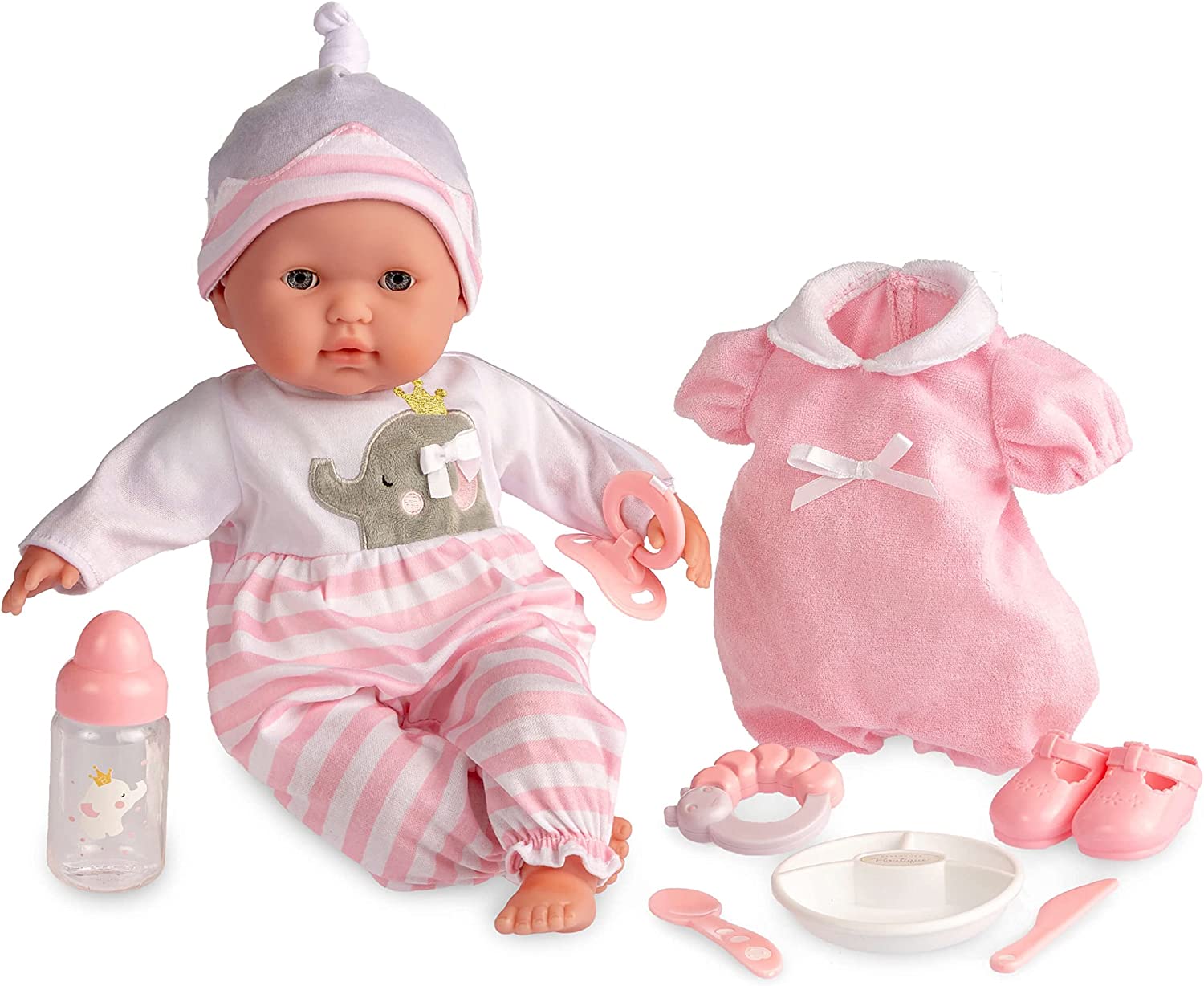
There is something nostalgic about a classic baby doll toy! Label body parts, clothing, and accessories for this language development toy. Encourage your child to engage in nurturing and caregiving role-play with the baby doll, and emphasize all the action words like sleep, eat, and play. Narrate what they are doing, such as feeding, changing diapers, or putting the doll to sleep, and model short phrases for them to try and imitate. Encourage conversation by asking open-ended questions like, “What does the baby need?” or “How can we make the baby happy?” Use descriptive language to discuss the doll’s features, emotions, and needs. This type of play enhances vocabulary development, fosters empathy and social skills, and encourages toddlers to express themselves verbally as they imitate real-life caregiving situations.
8. Bubbles
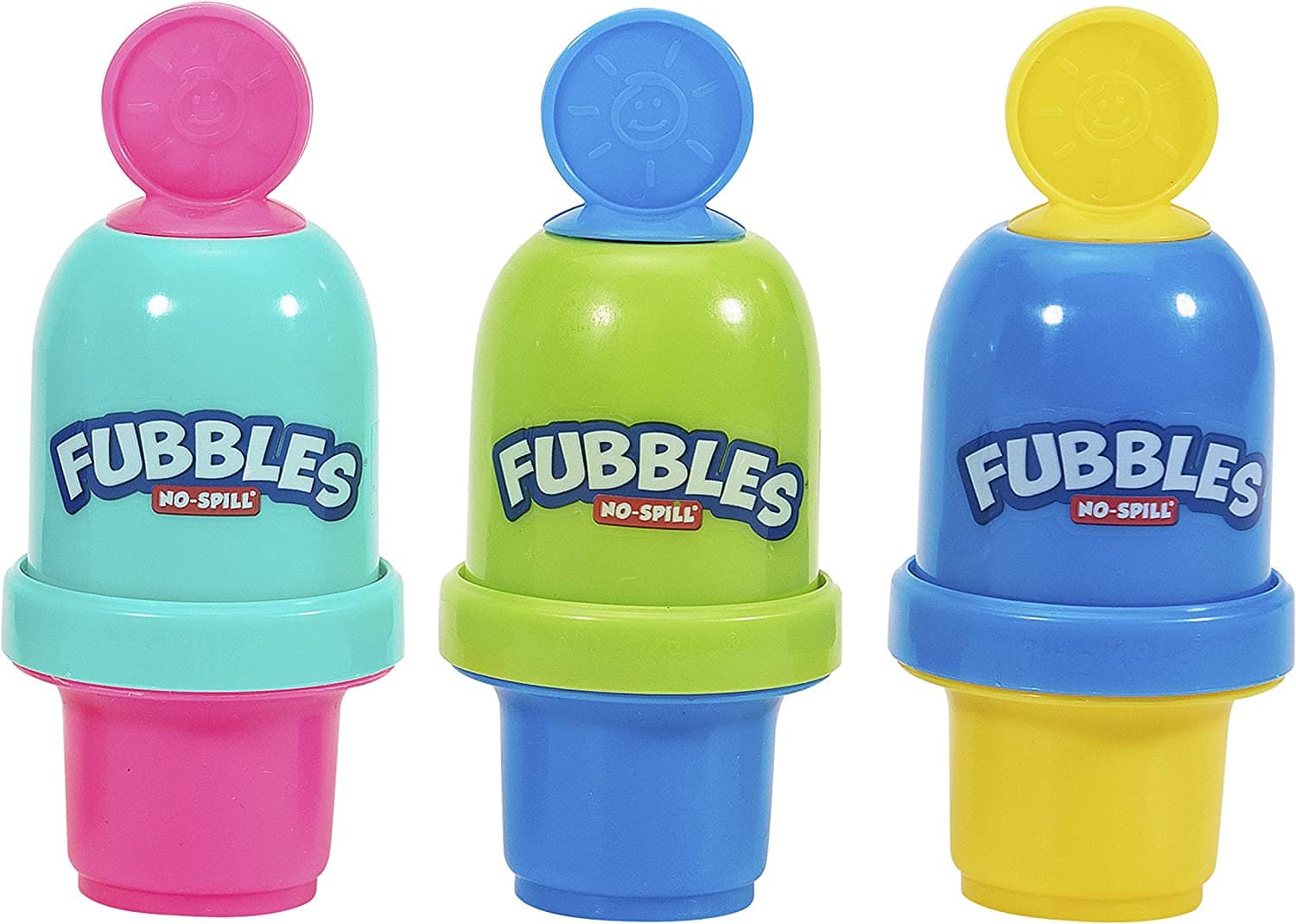
This fan-favorite language development toy always catches a little one’s attention. You can label the bubbles, the size of the bubbles, and how they move up and down. Exaggerate your excitement as you say “Pop!” and “Wow!” to encourage your toddler to imitate. Have your child request more bubbles or ask for specific actions, fostering their ability to communicate their desires. Describe the sensory experience of bubbles, like how they feel when they pop on your skin. Give your child the opportunity to follow directions with their body, like “pop it on your hand” or “kick it with your foot.” Take turns with your little ones as they try to blow their bubbles, and model taking turns for them. This bubble container is a wonderful, non-spill option.
9. Vehicles and Transportation
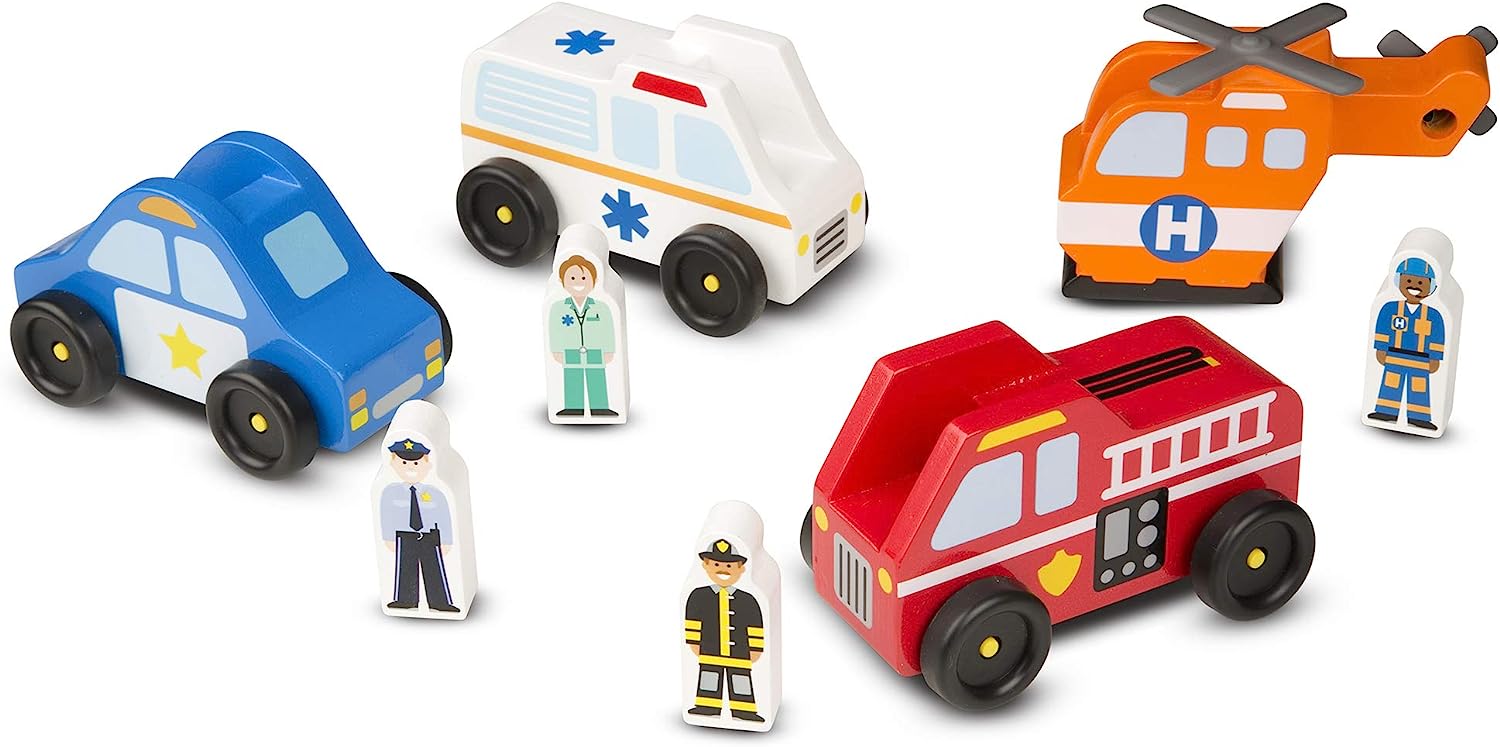
Kids are fascinated by real-life vehicles like garbage trucks and trains. Try fostering that curiosity by playing with various cars and trucks like fire trucks, helicopters, airplanes, and school buses. Label all the types of vehicles, their colors, and parts, and describe where you find them. Additionally, talk about the people driving the vehicles, like police officers, construction workers, and pilots. Model short phrases for your toddler to imitate, like “Firetruck is big” and “plane goes up up up!” Engage in imaginative play scenarios where they can act out driving, racing, or transporting objects. Prompt them to use action words like “go,” “stop,” “drive,” or “fly” as they play with the vehicles. Encourage them to make vehicle sounds and imitate your gestures.
10. Art Supplies
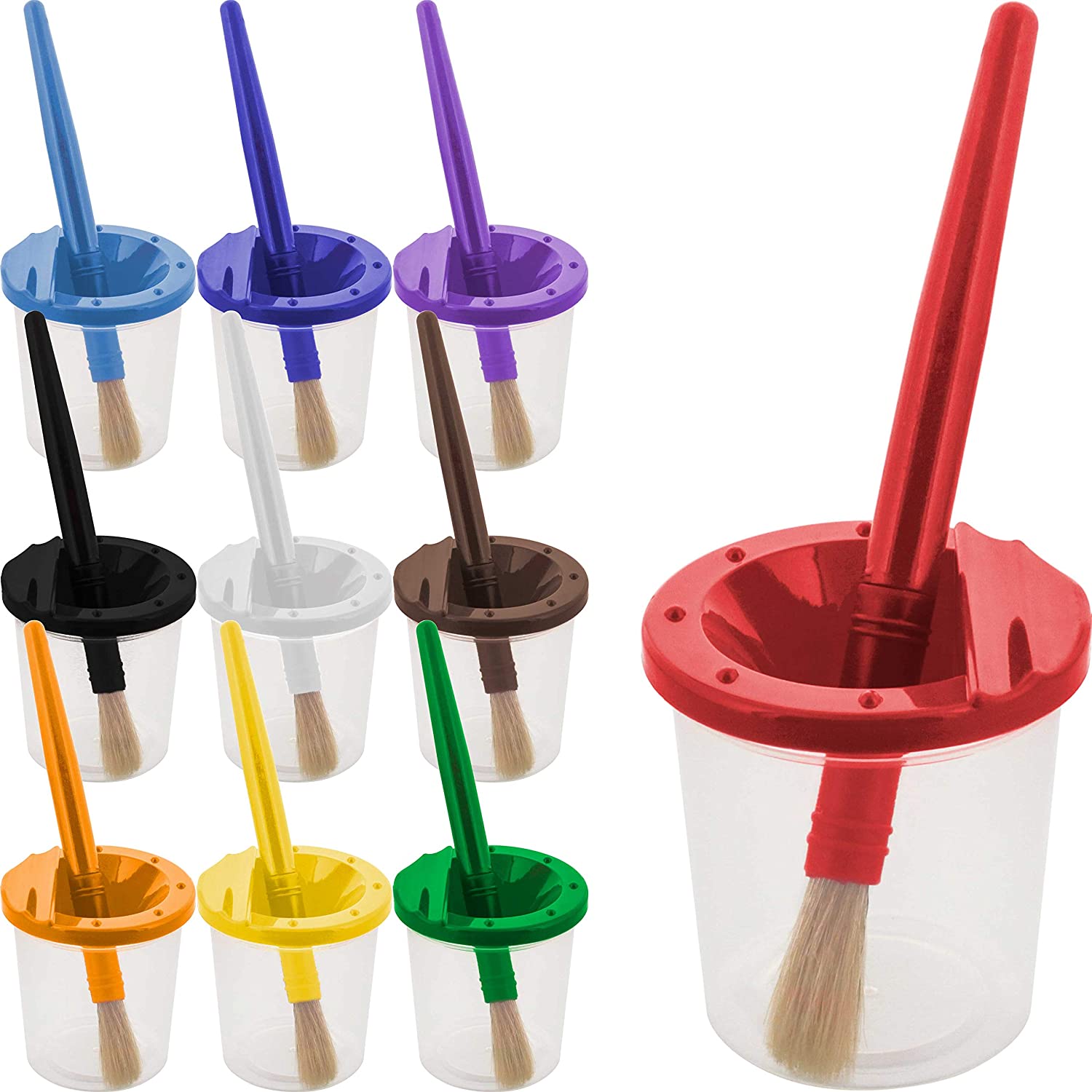
Give your child the opportunity to create something through art, and you will be surprised by how their creative and magical minds work! Not only is art a creative outlet but making something with their own little hands gives your child something to be proud of. Art supplies can be as simple as paper and some crayons or as simple as a toilet paper roll, glue, and feathers. That’s the beauty of it: Anything can be art! Label your materials and describe the colors, shapes, and textures of everything you see.
For very little ones, model what they are making with short phrases like “I see blue circles” or “Look, you made a sun.” For older kiddos, allow them to interpret their creations and ask them to explain them. Encourage them to narrate their creative process, expressing their thoughts and ideas. Target following directions by incorporating concepts like “glue the blue one under the pink one” or “after yellow, let’s use red.”
Always take the opportunity to sit and play with your kids. Exploring and interacting with different language development toys can help them develop their language skills, and the more you talk to them, the more they will learn.













